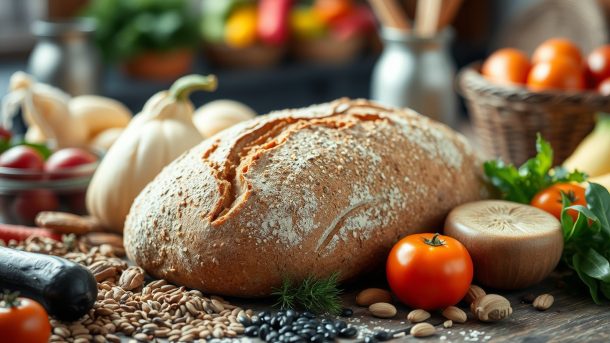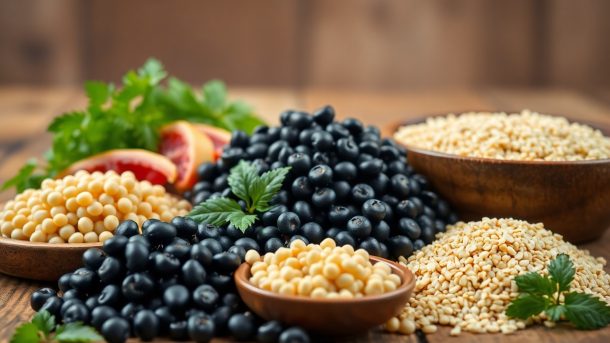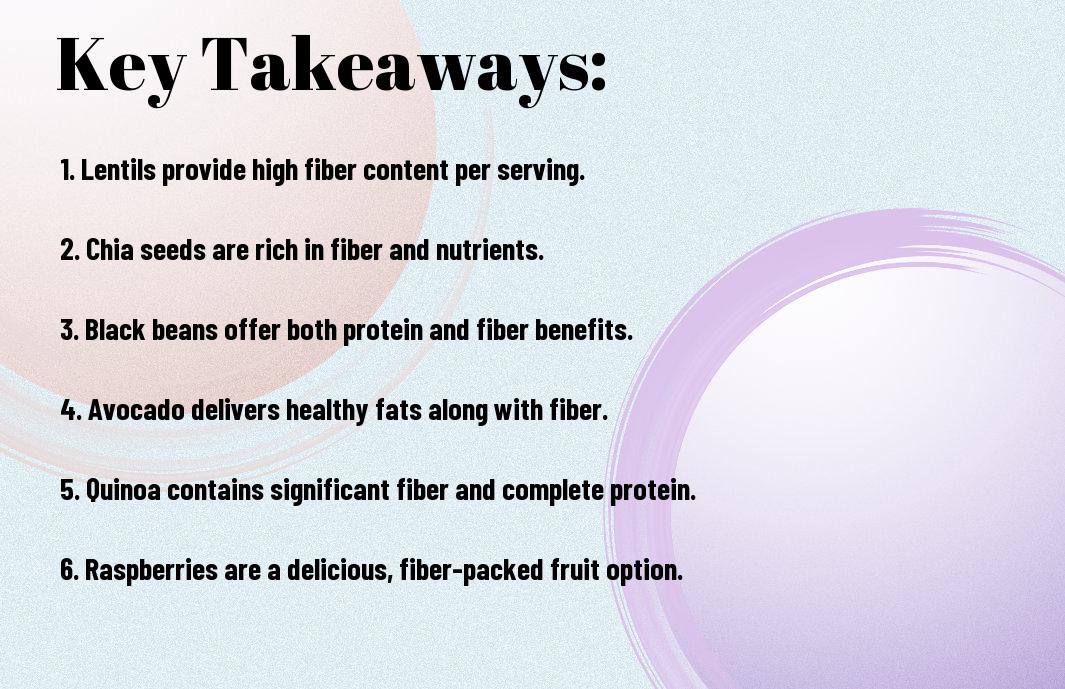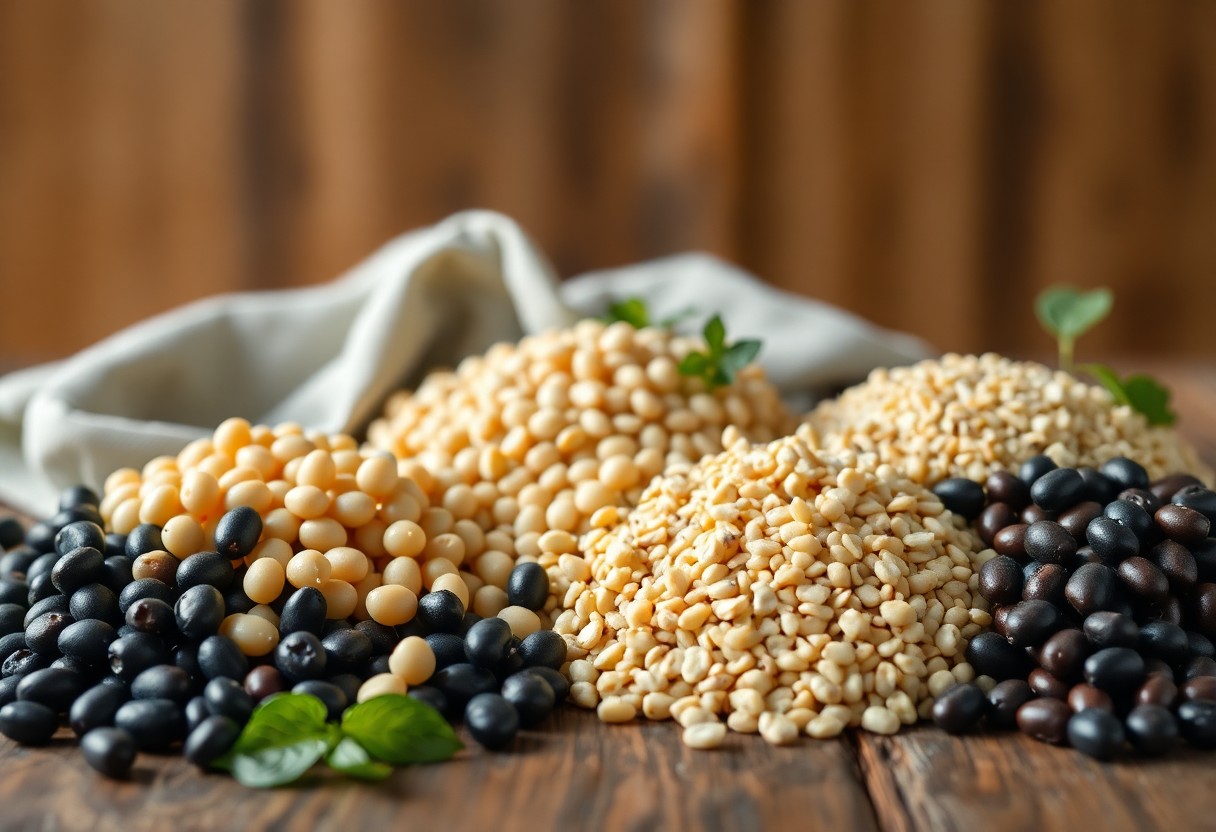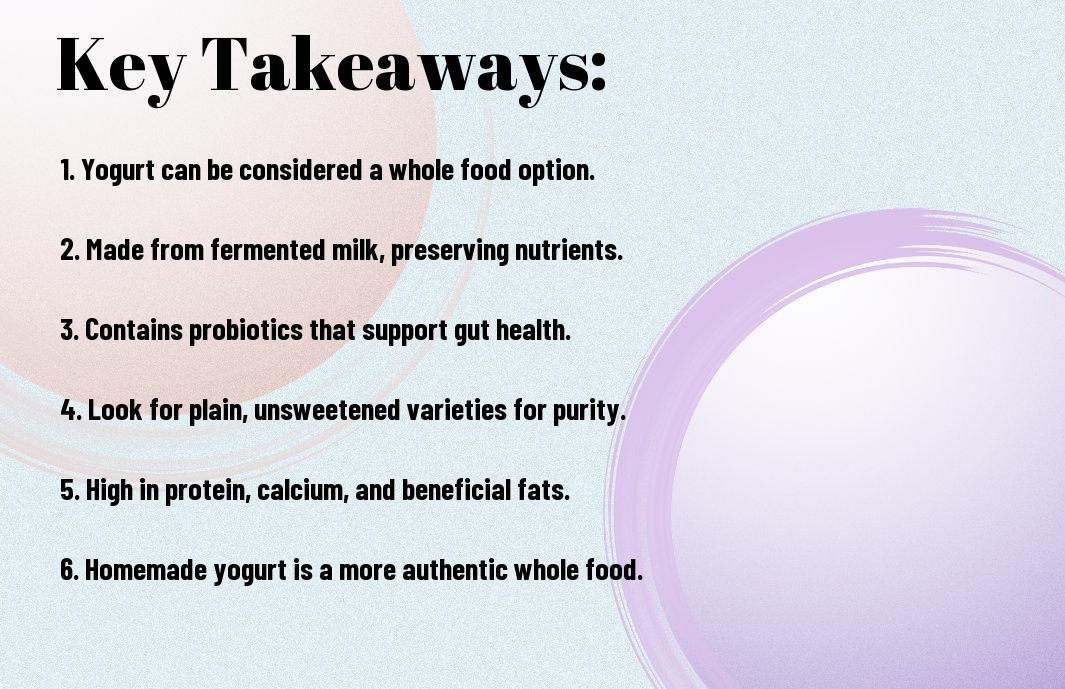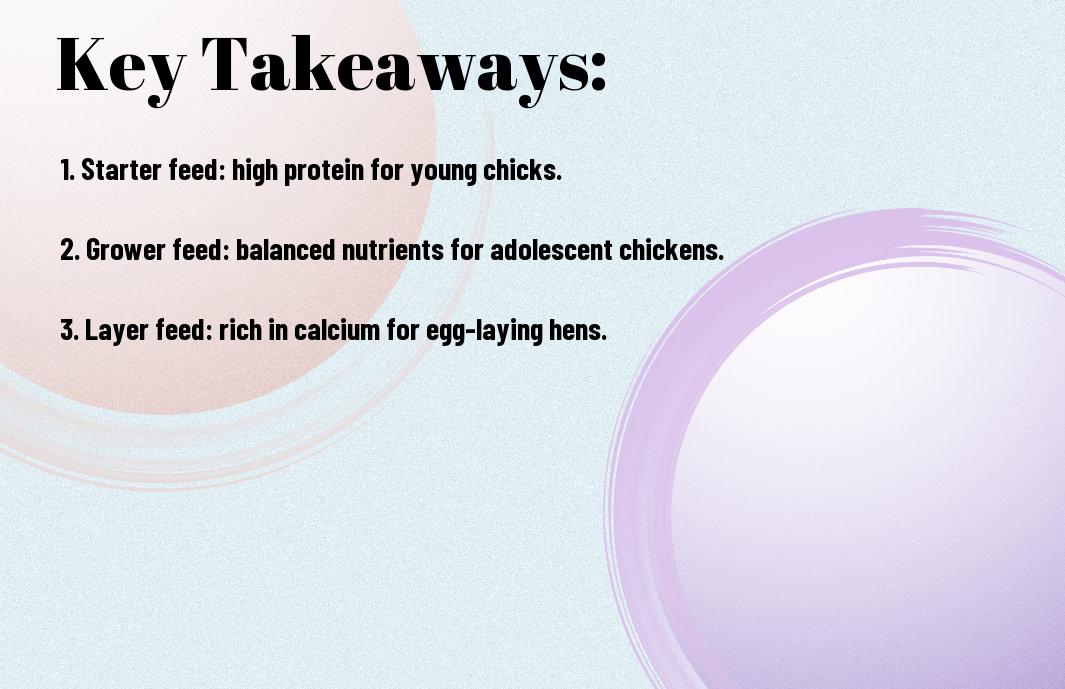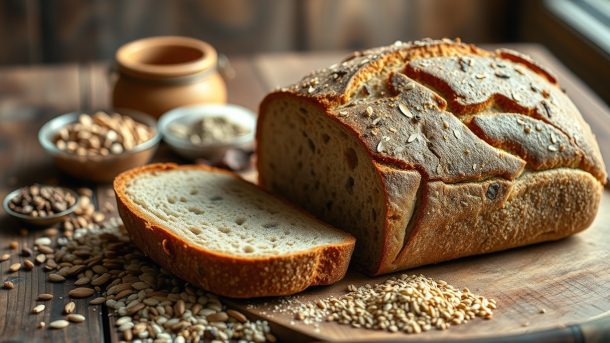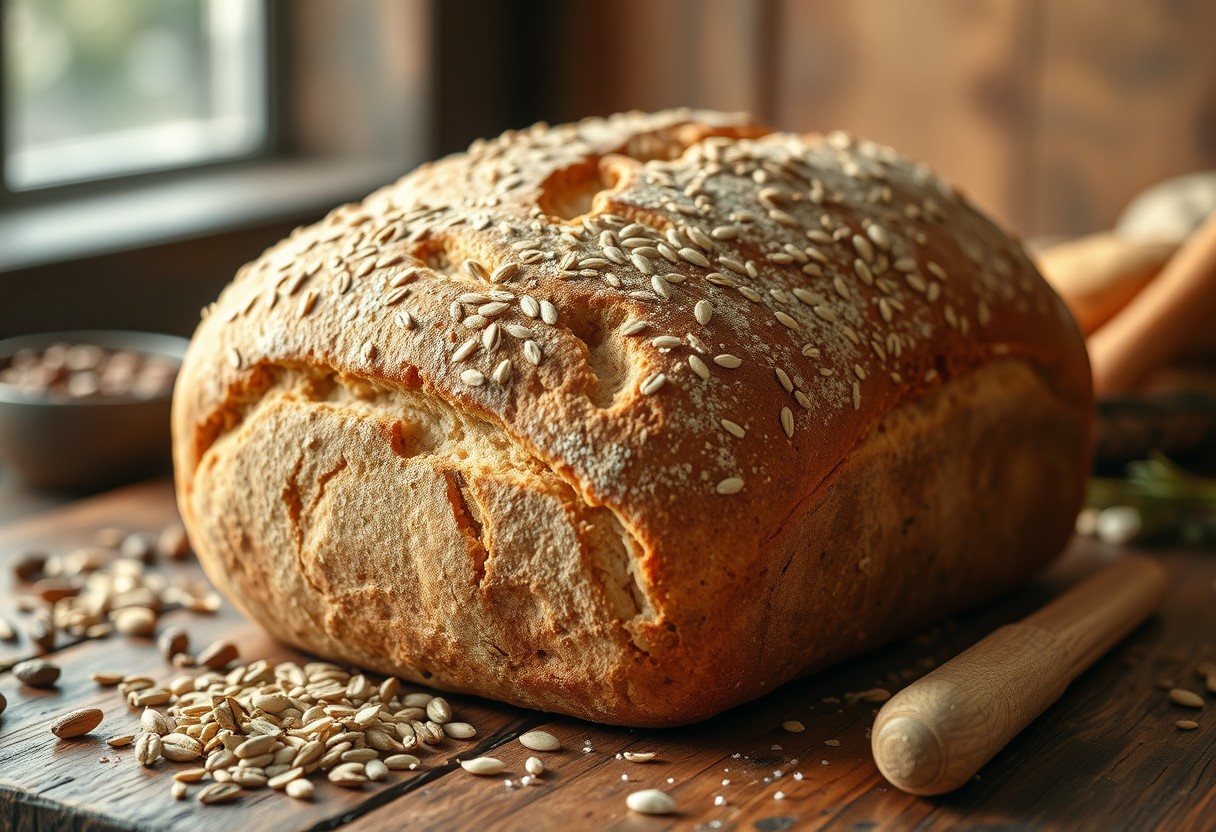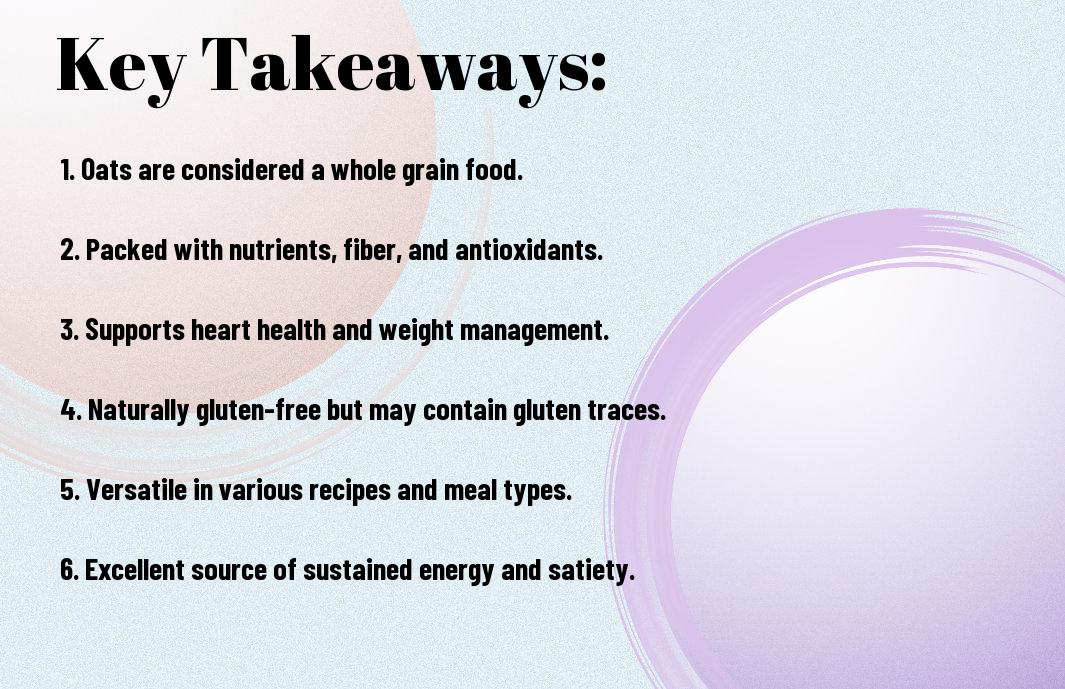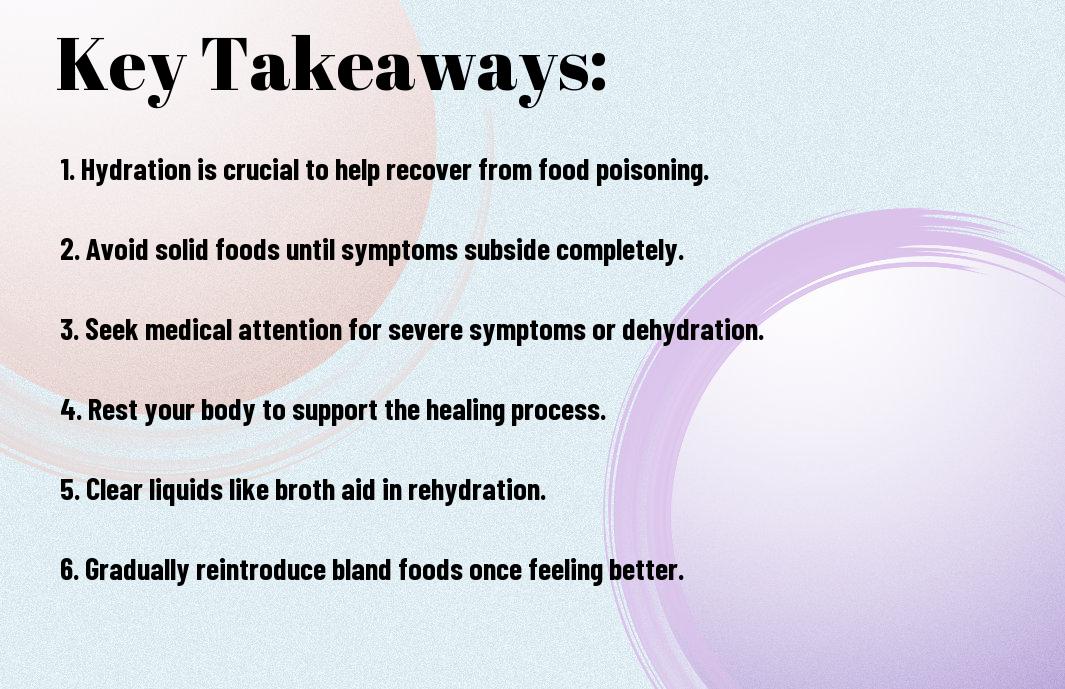Most people consider bread a staple in their diets, but you might wonder whether it qualifies as a whole food. Whole foods are minimally processed items that contain all their natural components, such as fiber, vitamins, and minerals. In this article, we will explore the different types of bread, their ingredients, and how they fit into the whole food category, helping you make informed choices about what you eat and how it impacts your health.
Key Takeaways:
- Definition of Whole Food: Whole foods are minimally processed foods that are as close to their natural state as possible.
- Types of Bread: Not all bread qualifies as a whole food; whole grain bread made from entire grains is considered whole food, while white bread is not.
- Ingredients Matter: The presence of additives, preservatives, and artificial ingredients in some breads can disqualify them from being considered whole foods.
- Nutritional Value: Whole grain breads typically offer higher nutritional benefits, including fiber, vitamins, and minerals compared to refined breads.
- Health Implications: Choosing whole grain bread over refined varieties can contribute to better health outcomes, such as improved digestion and reduced risk of chronic diseases.
Defining Whole Foods
To understand whether bread is considered a whole food, you first need to probe into the definition of whole foods. Whole foods are natural foods that are minimally processed and refined, retaining their original nutrients and fiber. For a comprehensive insight into this concept, you can visit What Are Whole Foods?. These foods are usually recognizable in their natural form, including fruits, vegetables, whole grains, nuts, and seeds.
Characteristics of Whole Foods
Whole foods typically have a few key characteristics: they are unrefined or minimally processed, free from artificial additives, and often high in nutrients crucial for your body’s well-being. These foods also tend to be more flavorful and satisfying, as they contain fewer artificial ingredients and preservatives.
Nutritional Value of Whole Foods
Any food that qualifies as a whole food usually boasts a high nutritional value, contributing crucial vitamins, minerals, and antioxidants vital for your health. They are often rich in fiber, which supports digestion and helps maintain a healthy weight.
The nutritional benefits of whole foods extend beyond just vitamins and minerals; they also include higher levels of antioxidants and phytochemicals that play a crucial role in disease prevention and overall health. By incorporating whole foods into your diet, you can enhance your nutrient intake, improve your metabolic health, and support long-term well-being.
Types of Bread
Even within the world of bread, there is a wide variety of types that you may encounter. Understanding these types can help you make more informed choices about what you consume. Here’s a breakdown of the most common types of bread:
- Whole Grain Bread
- Refined Bread
- Gluten-Free Bread
- Sourdough Bread
- Flatbread
Recognizing the differences among these types can facilitate healthier eating habits, tailored to your nutritional needs.
| Type of Bread | Description |
| Whole Grain Bread | Made from whole grains, retaining all parts of the grain. |
| Refined Bread | Made from refined grains, often lacking fiber and nutrients. |
| Gluten-Free Bread | Made without gluten-containing grains, suitable for gluten-sensitive individuals. |
| Sourdough Bread | Fermented bread using natural yeast, known for its tangy flavor. |
| Flatbread | Thin bread that can be unleavened or leavened, often used in various cuisines. |
Whole Grain Bread
On your journey to healthier eating, whole grain bread is a staple you may want to consider. This type of bread is made from flour that contains all parts of the grain—the bran, germ, and endosperm. Because it retains these components, it is higher in fiber, vitamins, and minerals compared to bread made with refined grains. Whole grain bread can provide lasting energy and promote digestive health.
Refined Bread
To better understand refined bread, you should know that it is made from white flour, where the bran and germ are removed during processing. This results in a softer texture and longer shelf-life, but at the expense of imperative nutrients and fiber. Many people consume refined bread daily, often without realizing its potential negative impact on overall health.
With the removal of the grain’s outer layers, refined bread lacks the fiber and nutrients that whole grain options provide. Consequently, it can lead to rapid spikes in blood sugar levels and may leave you feeling hungry sooner. If you’re looking to improve your diet, cutting back on refined bread may be a beneficial step.
Gluten-Free Bread
For individuals with gluten sensitivities or celiac disease, gluten-free bread is a necessary alternative. Made without wheat, barley, or rye, these loaves use a variety of gluten-free grains such as rice, almond, or tapioca flour. Although gluten-free options can help maintain dietary restrictions, it’s important to check the ingredient list, as some alternatives may still be low in imperative nutrients.
For instance, gluten-free bread can sometimes rely on added sugars or starches to achieve a desirable texture and taste, which can undermine its health benefits. Being aware of these ingredients will help you select the best gluten-free option for your needs. Always look for products that prioritize whole ingredients to maintain nutritional value.
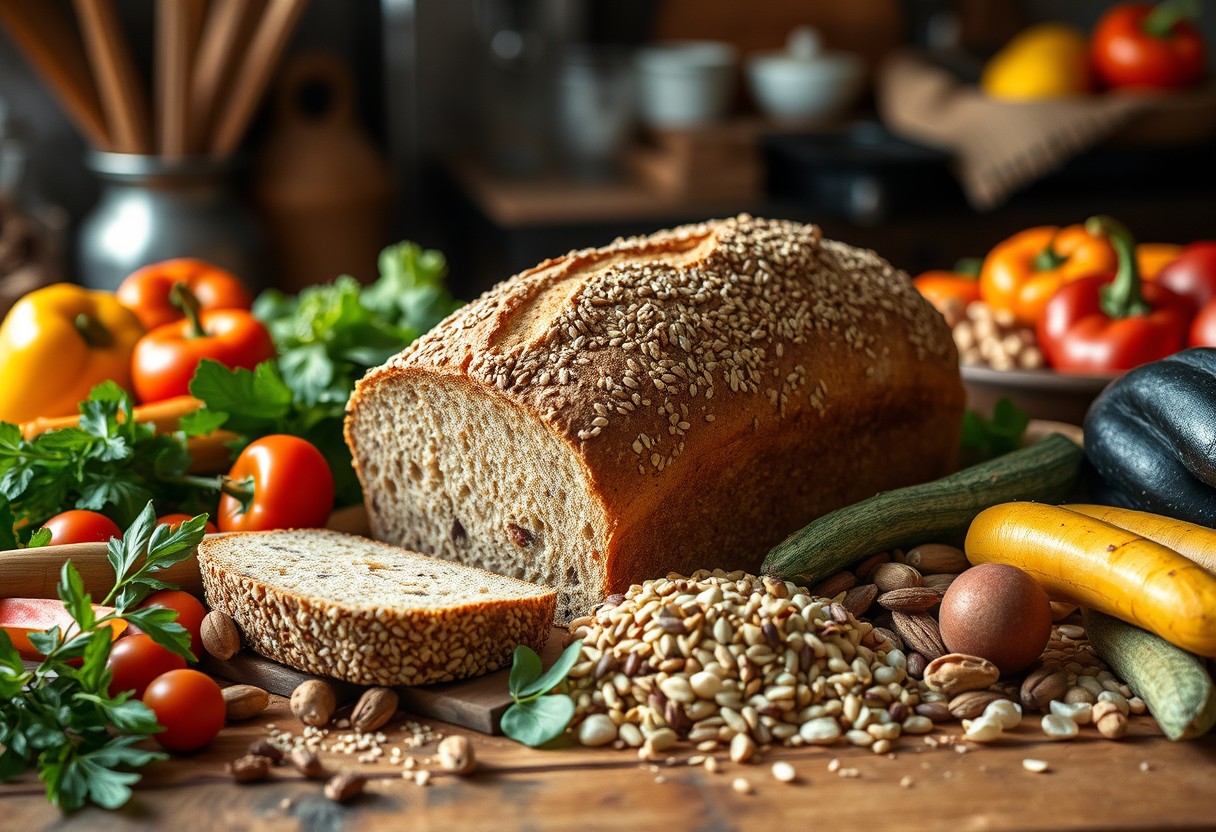
Bread in the Diet
All food groups play a vital role in your overall nutrition, and bread is often a staple in many diets. To better understand what foods belong to the Grains Group, you can visit What foods are in the Grains Group? Grains are crucial for providing energy and important nutrients, making them integral to a balanced meal plan.
Role of Bread in a Balanced Diet
With its rich carbohydrate content, bread serves as a significant energy source in your diet. It can contribute fiber, vitamins, and minerals, especially when you choose whole grain varieties. Incorporating bread mindfully allows you to enjoy its benefits while maintaining a nutritious balance in your meals.
Bread’s Impact on Health
Role of bread in your health can vary considerably based on the type you consume. Whole grain breads may help regulate blood sugar levels and improve digestive health due to their high fiber content. In contrast, refined white breads can lead to rapid spikes in blood sugar, making whole grain options a healthier choice.
Another factor to consider is the potential connection between bread consumption and weight management. While whole grain bread can keep you satisfied and help prevent overeating, excessive intake of refined bread can contribute to weight gain. Understanding how different types of bread affect your body is crucial in making informed dietary choices.
Bread Alternatives
With the growing awareness of health and dietary restrictions, many individuals are seeking bread alternatives that fit their lifestyle better. Options like gluten-free bread, cauliflower bread, or almond flour bread can provide variety and cater to specific nutritional needs without sacrificing taste.
Health-conscious choices in bread alternatives not only include gluten-free options but also low-carb varieties that can support your dietary goals. Experimenting with these alternatives allows you to enjoy your meals while ensuring that you’re making choices that align with your health objectives.
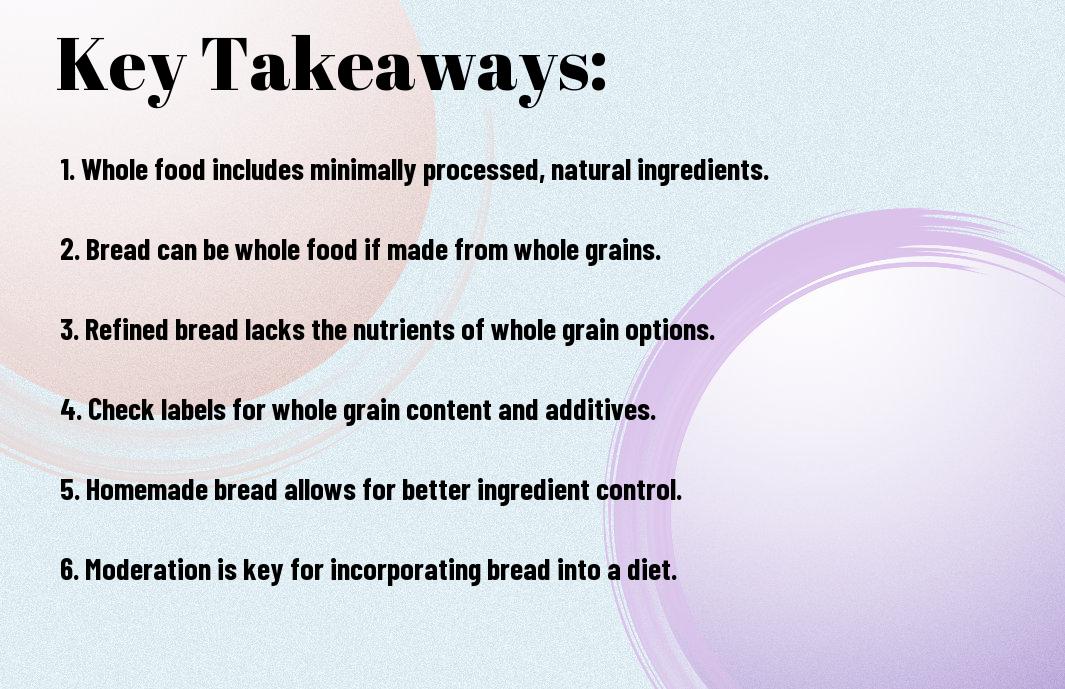
To wrap up
Upon reflecting, you can understand that the classification of bread as a whole food significantly depends on its ingredients. Whole grain bread, made from unrefined grains and containing minimal additives, aligns more closely with the definition of whole food, providing you with important nutrients. However, highly processed breads, filled with additives and refined grains, may lack nutritional value. Ultimately, it’s important for you to read labels carefully to make informed choices that support your health and dietary preferences.
FAQ
Q: Is bread considered a whole food?
A: Bread can be considered a whole food if it is made from whole grain ingredients, which means that all parts of the grain (the bran, germ, and endosperm) are retained during processing. Whole grain bread, such as whole wheat or oat bread, typically contains more nutrients and fiber than bread made from refined grains, which have had the bran and germ removed. However, many commercial breads contain added sugars, preservatives, and other ingredients that may not fit the definition of a whole food.
Q: What types of bread are considered whole food options?
A: Whole food options for bread include products labeled as “100% whole grain” or “whole wheat,” which indicate that they are made from whole grain flours. Additionally, breads made from sprouted grains, gluten-free whole grains like brown rice or quinoa, and sourdough bread made with whole grain flour can also be considered whole food options. When looking for whole food bread, always check the ingredient list to ensure that whole grains are listed as the first ingredient without excessive additives.
Q: How can I identify if a bread is not a whole food?
A: To identify if a bread is not a whole food, look for labels that indicate “white bread,” “enriched flour,” or any flour that is not specifically whole grain. Additionally, check for added sugars, preservatives, artificial ingredients, or a long list of unrecognizable ingredients. A bread that contains more than a few simple, whole-food ingredients (like whole grains, water, yeast, and salt) is likely to be processed and not considered a whole food.
